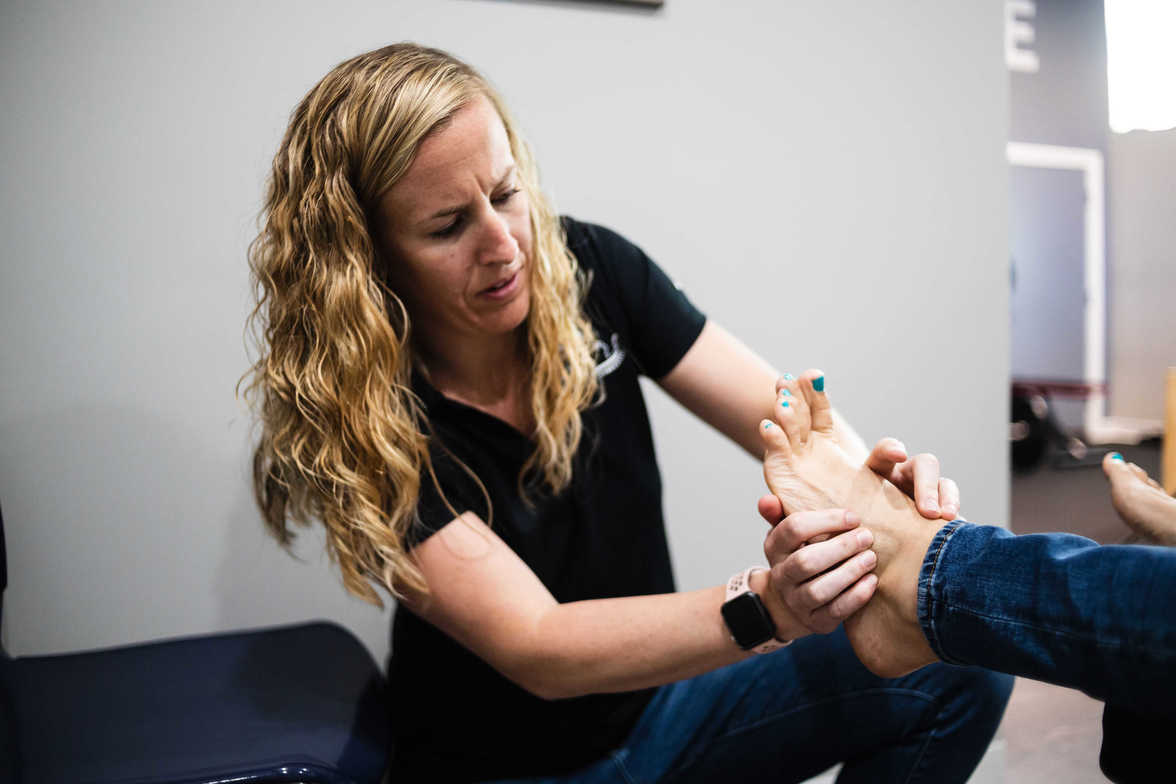
Are you an avid runner struggling with the discomfort of plantar fasciitis? The thought of it hindering your running abilities or affecting your upcoming race can be worrisome. But fear not! We will explore effective ways to assess, treat, and prevent plantar fasciitis, enabling you to continue running and achieve your goals without the need for lengthy rest periods or surgery.
Assessing and Treating Plantar Fasciitis:
If you experience pain on the bottom of your foot, particularly in the heel and arch, especially in the morning or after prolonged sitting, you might have plantar fasciitis. Active release technique (ART) is a crucial step in the treatment process. By breaking up the tissue, ART stimulates the healing process and improves muscle function.
During treatment, the focus is on the plantar fascia, starting from the toes and working all the way down to its insertion point on the foot. Ankle mobilization is also performed while the patient lies face up. Additionally, the calf muscles play a significant role in plantar fasciitis, so movements are performed to enhance blood flow to the area. ART is applied to the calves to improve muscle function. Using the BoomStick, a steel tool, further helps break up muscle adhesions. Strengthening exercises in the gym are also recommended to complement the treatment.
Incorporating Exercises into Your Routine:
To alleviate plantar fasciitis and maintain your running routine, three effective exercises are recommended:
Ball Exercise: This exercise targets three key spots on the bottom of your foot, promoting better flexibility and reducing discomfort. Using a ball, pump your foot up and down, lifting your toes up and bringing them down again.
Toe Towel Grab: Scrunching a towel with your entire foot engages the intrinsic muscles in the bottom of your foot, promoting strength and stability. Keep scrunching the towel to work these muscles effectively.
Toe Yoga: Lift all your big toes on both feet and attempt to lift all four smaller toes as well. Initially, you can provide support by pressing down gently on the toes. The goal is to perform this exercise without assistance, improving toe mobility.
Prevention Tips for Runners:
Preventing plantar fasciitis is vital for runners who want to stay injury-free and maintain their training. Here are 3 important factors to consider:
- Load Management: Keep track of your time, mileage, and effort. Gradually increase your training each week, ensuring not to exceed a 10 to 30% increase in time, duration, or distance. This gradual approach helps prevent overloading and injury.
- Shoe Evaluation: Evaluate the integrity and performance of your footwear after reaching the 200 to 300-mile mark. Ensuring your shoes provide adequate support is essential for preventing plantar fasciitis.
- Cadence Training: Aim for a cadence of 160 to 180. If your cadence deviates significantly from this range, incorporate short intervals, using a metronome on a treadmill to train within the desired cadence range.
Plantar fasciitis doesn't have to be a roadblock in your running journey. By assessing and treating the condition with active release technique, incorporating targeted exercises into your routine, and following preventive measures, you can continue running smoothly and achieve your running goals and stay consistent.





